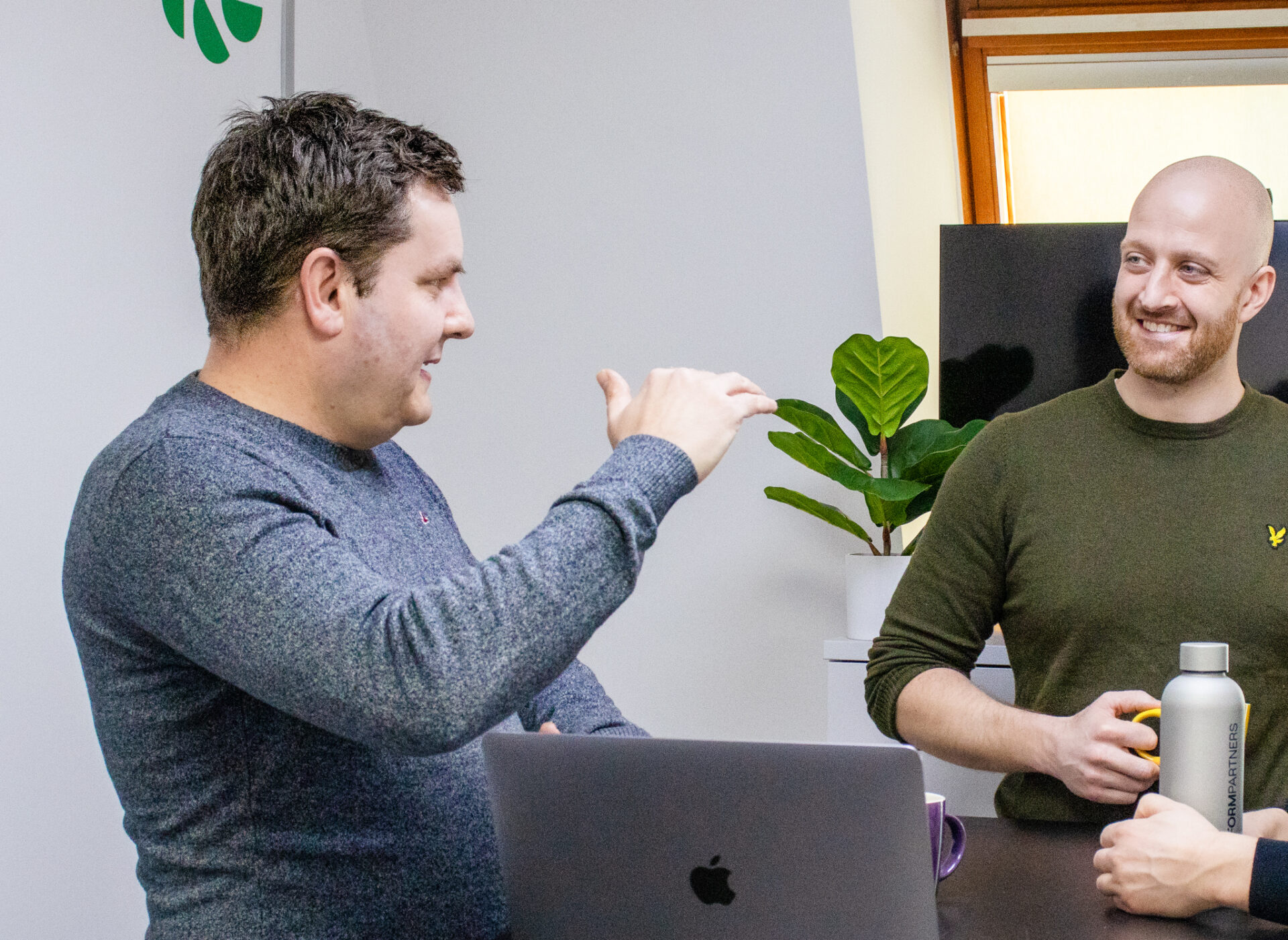Broadcom Didn’t Break Your Infrastructure Strategy, You Did

Licensing strategy, infrastructure spend, and organisational planning cycles: Why CFOs and CTOs must align before spending license locks-in
When organisations delay strategic alignment between finance and technology leadership, progress doesn’t fail, it stalls. And in that inertia, opportunities are missed, infrastructure costs escalate quietly, and critical decisions about licensing, platforms, and architecture become harder to make with confidence.
We have seen this dynamic play out before. Now, it is being exposed again with Broadcom’s changes to VMware’s licensing model. The shift from perpetual licences to subscription-based bundles, however, is more than a pricing change: it has become a strategic stress test, played out on a public stage. Organisations are watching each other, asking quietly but urgently, “What are you doing?” – not out of curiosity, but out of necessity, hoping to validate their own next move. The pressure is felt internally, across peer groups, partners, and competitors. No one wants to get it wrong, but few have full confidence (or clarity) of the path ahead.
But let’s be clear: this is not a VMware problem. It is the symptom, not the cause, of a deeper, structural issue in how organisations plan infrastructure investments, align contract cycles, and evaluate infrastructure modernisation.
The real challenge is that licensing strategy, infrastructure spend, and organisational planning cycles are rarely aligned, and the cost of that misalignment is mounting.
A Perfect Storm of Uncoordinated Commitments
CFOs and CTOs today are wrestling with three major pillars of infrastructure cost:
- Premises, including power and data centre contracts, typically on three to five-year terms
- Hardware, often the largest cost area, is refreshed in five to seven-year cycles
- Licensing, including platforms like VMware, ranging from one to five years
On their own, these appear to be logical commitments. But they rarely happen in sync.
So when a VMware renewal increases by 200 per cent in late 2023, a CTO may already be locked into a £10 – 15million pound investment in compute and data centre infrastructure. Even if moving to cloud now makes financial sense on paper, it becomes politically and operationally complex.
For a CFO, it presents a difficult dilemma: write off committed spend, or delay strategic progress. Add to that, the complexity and uncertainty of the virtual estate, the typical outcome seen across the industry is that the increase is tolerated, the license is simply renewed, and absorbed because the organisation has little room to manoeuvre and adapt. And then, the costs begin to compound.
In my experience, however, this is not about poor judgment. It is about cycles that were never built to align, and leadership teams that were never encouraged to challenge those rhythms, together.
The True Cost of Misalignment
When technology and finance operate in silos, these are the outcomes:
- Strategic drift, where long-term investments made in isolation make future agility harder
- Budget rigidity, where locked-in costs remove flexibility just when it is needed
- Risk avoidance over opportunity pursuit, where change feels harder than continuity, even when the data says otherwise
- Self-protection dynamics, where leaders avoid confronting sunk costs to preserve credibility, not just capital
And ultimately, infrastructure enhancements like cloud transformation or VM modernisation become reactive instead of strategic.
Misalignment delays progress and, over time, compounds risk and cost. If left unaddressed, it begins to affect more, where that inertia becomes a strategic liability.
Like a waterfall moving its way down the business, the delivery teams lose clarity on priorities. Momentum fades. Culture suffers as talent feels the drag of indecision. Progress slows, and motivation follows. Quiet frustration builds. And while internal alignment falters, competitors seize the moment, taking your market share and skilled teams. Markets do not wait. What begins as a localised hesitation, or a misalignment of timing, priorities, or intent between teams and roles, can quickly become a loss of ground.
That is why recognising the early signs of misalignment is a broader operational concern and a strategic imperative.
A Better Approach: Strategic Co-Ownership
The real opportunity lies beyond cutting licensing costs. It lies in reshaping how decisions are made at the board level, supported by data-driven clarity.
That early collaboration between finance and technology leaders during infrastructure planning windows can future-proof platforms, build resilience, enhance security posture, and improve decision-making agility. So when the market shifts, the organisation is ready to adapt, stay aligned, and move forward with intent.
This shift creates space to:
- Assess all infrastructure costs, not just individual licences in isolation
- Understand sunk costs versus future value
- Balance risk and timing across finance and technology leadership
- Plan migrations proactively, not defensively
- Retain in control of the ship (I dislike this term but it stands true)
Cloud is not always the answer. And for some, it may not be the answer at all. Parts of the estate may benefit from cloud migration, while others are better optimised in their current environment or through alternative approaches. Know that there is no silver bullet, no one-size-fits-all. The right solution depends entirely on the organisation’s specific needs, current usage, and strategic state.
Too often, decisions are shaped by trend narratives or external pressure, without stopping to ask, “Why?” and without having the data to confidently answer that question.
We have been in those conversations before, most recently: “What’s the best AI, and how can we get it to work for us?” That question, while understandable, reveals the core challenge.
There are thousands of tools on the market, and most can be onboarded quickly; tech transformations are relatively linear in their delivery. But when new technologies are introduced without a clear connection to business need or visibility into existing infrastructure, they become just another bolt-on: superficially helpful, but structurally fragile. They solve in the short term, but complicate in the long term.
Over time, these decisions stack up. Usage becomes unclear. Documentation gets lost. Performance degrades. Licensing costs rise. Latency creeps in. And organisations are left with a landscape of bolt-ons: technically present, but strategically unsupported. Then the market shifts, just like VMware by Broadcom, causing significant ripples across the sector. Without shared visibility, the CTO is left managing complexity, while the CFO sees only escalating costs without context. This is where alignment matters, because without a shared understanding of what exists, what is used, and what is delivering value, leadership teams cannot respond with confidence when change comes.
This is exactly why the ‘why’ matters. It is why data-led insight and estate understanding must come before direction is set. Because it is not about what is trending, it is about what is truly needed.
At Perform, we always start with the ‘why,’ even when it is not the most commercially rewarding path for us. There are times we may have missed revenue opportunities by doing the right thing for the client, holding back on a recommendation until we truly understood the challenge, the estate, and the need. This is our approach. Clarity begins with understanding what you have, how it is used, and what your business needs to move forward. That insight comes from data, not assumption.
It is not about what you want to do next. It is about uncovering what you need to do first.
Stop Allowing Licensing Deadlines to Dictate Your Strategy
The recent VMware changes have exposed visibility gaps across the VM estate in many organisations. Environments have grown organically. Ownership is blurred. Costs are rising, and not just from licensing.
When teams build a habit of continuous visibility, regularly assessing actual asset usage, not just perceived needs, changes like VMware’s licensing model become moments of opportunity rather than disruption. They allow forward-thinking organisations to remain competitive, responsive, and in control.
That mindset is a cultural shift as much as it is a technical one.
What You Can Do Next
We have developed two tools to help CFOs and CTOs work together, not act individually:
- Free Guide: 10 Data Points to Validate Before Making a VM Decision
A strategic checklist to assess estate health, cost visibility, and transformation potential. Download the guide now…
- Optimisation and Licensing Assessment
Explore how our vendor-funded, commitment-free review helps map your technical and commercial readiness across infrastructure. It’s designed to give a clear position from which to make informed, confident decisions. No forms. No pressure. Download, learn more and explore how this is the right opportunity for you.
Final Thought: Lead with Visibility, Not Legacy
Environmental shifts, such as Broadcom’s VMware changes, will continue to occur. But organisations with a culture of shared decision-making, ongoing asset awareness, and cross-functional alignment are better placed to respond with confidence. These shifts become accelerators, not blockers.
And rarely is the answer to overhaul everything. Even now, in the middle of industry-wide change, the most effective response is not dramatic redirection, but thoughtful optimisation. Understanding what you have, how it is used, and where the value lies creates a stable foundation for any next step.
The best starting point is often a simple one: what can we do better, right now, to deliver more value and reduce cost? Answering that question may take only a matter of weeks. With the right data, and the right conversations, it is often far less complex than it first appears.
Tools like the Optimisation and Licensing Assessment exist to make that clarity achievable: quickly, objectively, and without long-term commitment. Addressing the inertia you may be feeling.
By fostering early collaboration between finance and technology leaders during infrastructure planning windows, CFOs and CTOs can stop defending past decisions and start shaping better ones, together.

